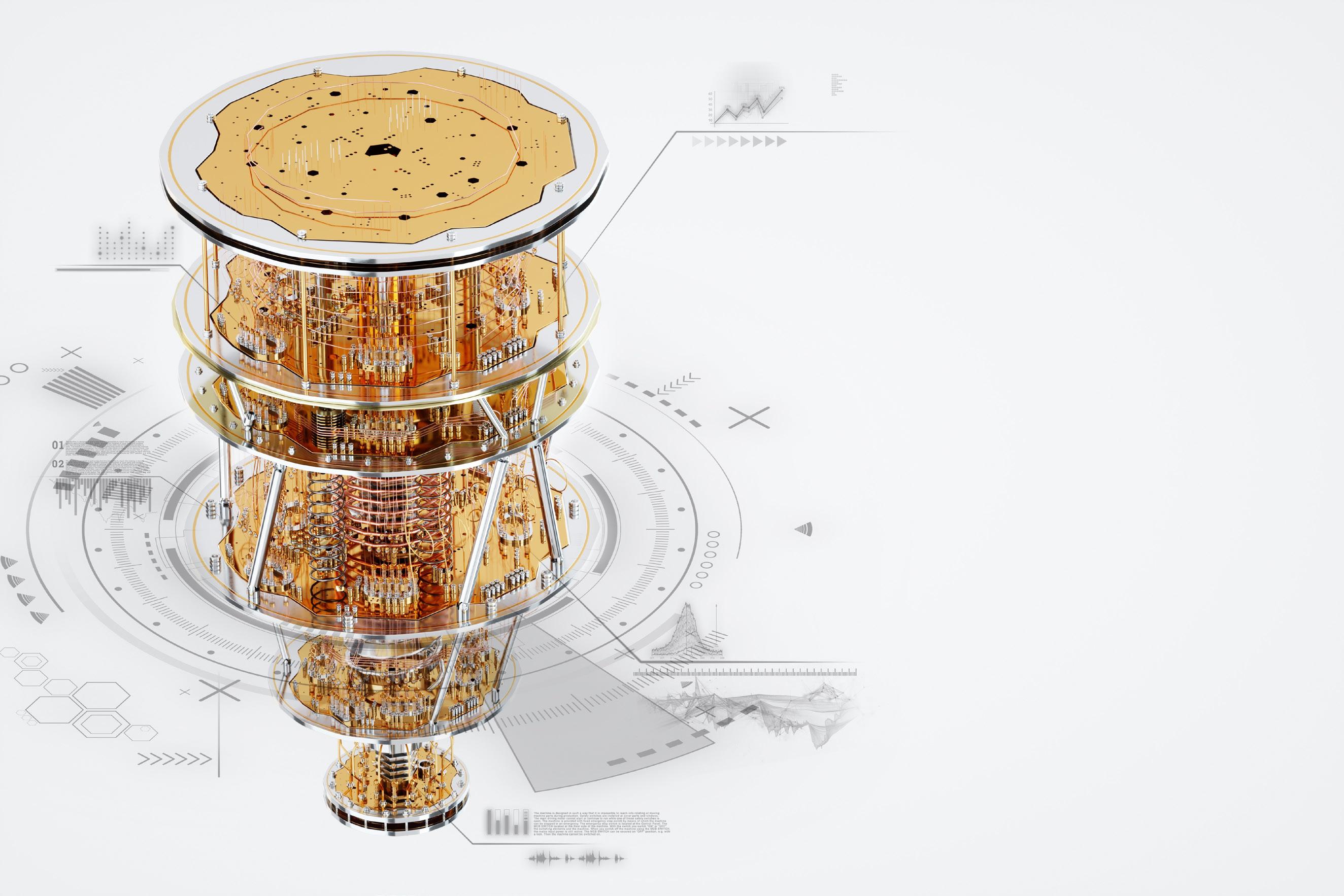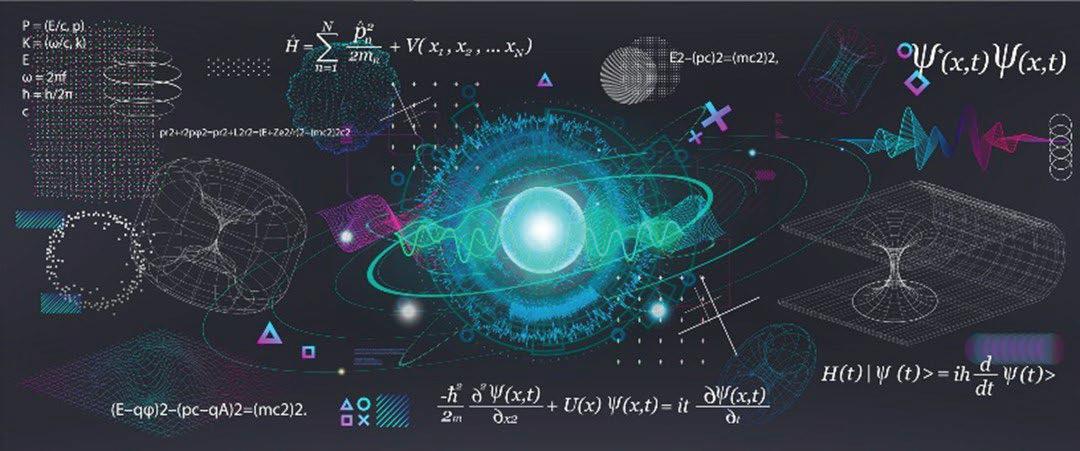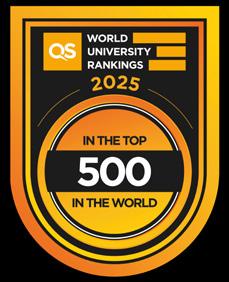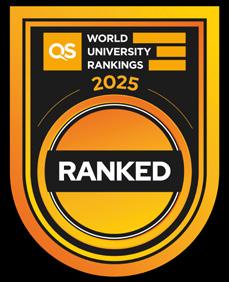
6 minute read
The Emerging Necessity for Quantum Literacy: How Quantum Computing Will Revolutionize our Technological Landscape
Dr. Stavros Christopoulos Associate Professor of Physics, Department of Sciences and Engineering, Sorbonne University Abu Dhabi
It is in the realm of Physics where technological advancements are usually born. To comprehend the dynamics of any natural system, no matter what its size is, from subatomic particles and nuclear fusion, to lasers, cars and computers, to the vast universe with its countless stars, we rely on Physics for answers. Quite unsurprisingly, Quantum Computing is no exception. This emerging field will very soon bring radical changes in hardware processes and software protocols in order to harness the enormous calculative power of quantum devices. Their impact is expected to shape our technological civilization rendering a ‘quantum literacy’ absolutely necessary for future generations.
But let’s see how it all started. Its inception can be traced back to the 80s, when the renowned physicist Richard Feynman was trying to get access to the subatomic world, where Newtonian Mechanics does not hold, resulting in very exotic phenomena, explained only with the help of Quantum Physics. For several reasons, that the reader might want to look up on their own, nature is quite elusive in these quantum scales, often measuring up to only a few billionths of a meter. Experimental evidence was still quite scarce back then, so Feynman tried to gain insight into this world through simulation. Very soon though, it became apparent that computers were far from able to produce the calculations of a system, the complexity of which was increasing exponentially with every particle he added. He was brought to a standstill…
Thinking, as per usual, outside of the box, he had a breakthrough: what if he could build a computer based on a system similar to the one he wanted to study? This new device would certainly have the capacity to produce calculations as fast as the system under study, being based on the same principles, those of Quantum Mechanics.
Though technological advancement at the time did not allow for the development of such a device, it could not be more relevant in our time. With numerous startups and billions of dollars of funding currently engaged, the race for a fully operational quantum computer is very soon to yield fruit. And with it, we will have the capacity to shed light into the obscure quantum world, increasing our understanding about nature in an unprecedented manner, but also unlocking a vast number of new applications.
But I am getting ahead of myself. Let’s take things at the beginning. What do we find in the core of a Quantum computer? The answer to that is effectively any quantum system that can occupy two distinct states, exactly as the binary system of “on” and “off”—closed and open circuit, respectively—found in any conventional computer. In this manner we can use superconductors, trapped ions, quantum dots, photons or even neutral atoms. Any of these systems will do, and will constitute, paraphrasing the well known “bit,” the quantum bit or qubit. For example, a qubit could be two polarization states of a single photon (horizontal and vertical) or the energy state of a trapped atom or ion (low/ground state and high/excited state).
So far things are not entirely different from a conventional computer, but there are three properties dominating a quantum system which we exploit to boost things up: superposition, entanglement and interference. At this point, I call on the reader to be patient and make an effort to open up to these groundbreaking ideas. After all, we can’t observe such phenomena in our everyday life (except from their results)—they are reserved for the quantum realm…
Let’s begin with superposition: while a bit can be either “on” or “off,” a qubit can be host to both states at the same time! In other words, it exists as a linear superposition of both states, with a calculable probability to find it in either one, but only upon measurement. The reader is strongly encouraged to refer to the story of Schrödinger’s Cat for some additional insight and fun!
Superposition is the reason that Feynman needed a vast number of classical bits to study a quantum system in the first place!
Intertwined to superposition is entanglement: when two or more qubits are entangled, there seems to be a relation between them, no matter how far apart they are. To reveal the nature of this relation, we need only measure one of them. At the time of this single measurement all entangled qubits will seize being in superposition and will collapse to one of their predetermined results. Which one? This is exactly what their entanglement was concealing. To understand the power of these two properties, consider the following: 10 entangled qubits have the capacity of containing 210 different results at the same time, while 10 bits contain only 10. I’ll take it even further. The amount of information that is contained in 500 entangled qubits would require a number of classical bits larger than the number of atoms in the known universe…
And finally, interference. In order to produce a result which is not random, as for example the
Dr. Stavros Christopoulos Associate Professor of Physics, Department of Sciences and

ability of the right answer while diminishing that of the wrong ones (destructive interference).
Combining these three properties endows Quantum computers with unparalleled processing and computational abilities, since they are expected to conduct perplex operations simultaneously. Theory predicts that, for speci c processes (such as quantum many-body problems, prime factorization, etc.), a Quantum computer will be extremely e cient, completing them in just a few minutes, whereas a conventional computer would take billions of years!
The emerging eld of quantum computing will require all types of operations to be “reconstructed” on this entirely unique hardware. Quantum Simulation will pave the way to extremely e cient modeling of many-body problems faced in Science (quantum, atomic and molecular systems), Finance (banking and investment models), Medicine (drug design, development of medical instruments), Environment (climate change and weather forecast), and many other sectors. Furthermore, Quantum Information processes are expected to produce profoundly fast processing, storage and transmission of information, while through Quantum Cryptography the new security protocols will be physically impossible to break.
a process that needs to begin throughout a student’s undergraduate years. This is the reason that the new Physics program at Sorbonne University Abu Dhabi is combined with a specialization certi cate in Quantum Technologies, delivered, like all its degrees, from Sorbonne University, France.
A nal comment to limit the reader’s imagination. Quantum computers will not replace conventional ones in everyday life, nor will we, any time soon at least, carry them like amobile phone in our pocket. The reason: these devices require extremely low temperatures and absolute isolation from the environment so that the abovementioned, fragile quantum e ects can take place. Nonetheless, one thing is certain: quantum computing will profoundly shape our future, in uencing our lives in ways we are only beginning to imagine…






